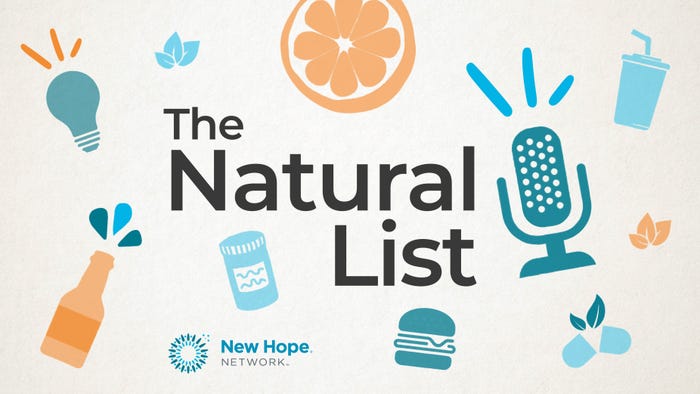What you need to know about the Paycheck Protection Program
The Paycheck Protection Program is designed to support small business through the economic effects of the coronavirus pandemic. If your business can avoid layoffs or pay cuts, your loan could be forgiven.
April 7, 2020

Last week, the federal government began operating the Paycheck Protection Program, which was created to help small businesses survive the economic crisis that has resulted from the coronavirus pandemic. While some aspects are being still being tweaked, here's a general overview of the program and what business owners need to know:
PPP loan amounts will be limited to 2.5 times your average monthly payroll costs, capped at $10 million.
PPP loans will have a 1.0% interest rate.
Payments are deferred for six months, but interest will accrue during this time.
PPP loans are due in two years (but may be prepaid).
No collateral or personal guarantees are required.
Who is eligible?
Companies with 500 or fewer employees. Exemptions apply to the hospitality and restaurant industry, and a higher number may apply to certain industries as set forth in Small Business Administration regulations.
What are the key terms of Paycheck Protection Program financing?
PPP loans may be forgiven provided funds are expended on permitted items. Loan forgiveness may be reduced under certain conditions:
You reduce your FTEs during the eight-week period after you receive your loan.
You decrease wages by more than 25% for employees making less than $100,000 in 2019.
You fail to resume employment for employees who were furloughed or terminated between Feb. 15 and April 26.
How do I apply?
Contact your bank immediately. Ask if they are a Preferred SBA Lender. If they are, ask if you can have priority status. If they are not, ask if they can refer you to a bank that is.
The current PPP loan application is available here.
The filing deadline is June 30, but we recommend you file as soon as possible. Loan funds will be disbursed on a first-come, first-served basis. (Editor's note: As of Monday morning, Treasury officials said, the Small Business Association had processed 124,000 loans totaling $36 billion, The Wall Street Journal reported. The program is capped at $349 billion. On Tuesday, the Treasury Department asked Congress to allot $250 billion more for the program, according to Bloomberg.com.)
What documentation must I file with my application?
At minimum, lenders will likely request your tax return and/or year-end financials; verification of the number of employees and payroll costs; bank statements; and your governing documents, such as articles of incorporation and bylaws for corporations.
What restrictions apply to use of PPP loan funds?
The principal permitted use are payroll costs, including benefits. Other costs, if incurred or in connection with agreements in force before Feb. 15, permitted are interest on mortgage obligations, rent under lease agreements and utilities. No more than 25% of the loan forgiveness amount may be attributed to non-payroll costs.
We suggest setting up a separate bank account for PPE loan funds. It will be easier to track and verify expenditures using PPP funds if you do so.
What are the major obstacles to obtaining PPP loans?
Determine if your existing credit facilities have restrictions on additional indebtedness.
Are your investors considered "affiliates" for purposes of your application?
If your investors are considered "affiliates," that may complicate or compromise your application process, as the number of employees of such investors and their other portfolio companies are added to the applicant's numbers when determining size. As of Friday, the SBA is applying previously determined standards of assessing whether the affiliation rules apply, including whether an investor has "affirmative control" or "negative control" of a portfolio company. There is hope these standards might be relaxed with respect to eligibility for a PPP.
Whether any of your investors is an affiliate is a fact-specific determination based on your governing documents and contractual agreements with your investors. Consult with your legal counsel to determine whether any of your investors may be deemed to constitute an affiliate.
What to expect
The process is unlikely to run smoothly. We hear that many SBA lenders are not prepared to process the onslaught of potential PPP applications. While the underwriting process is intended to be streamlined, systems have not yet been put in place to process the expected number of applications. The projected three-to-six week timeline to fund PPE loans may not be realistic.
If your bank is not an approved SBA lender, the application/funding process may be more difficult with a different SBA lender that is not familiar with your business.
For additional information on the PPP financing program, see these source:
We particularly recommend that segment on SBA Financing presented this week by K2 Financing and First Horizon Bank in the webinar hosted by Naturally Bay Area, Gary Hirshberg of the Hirshberg Entrepreneurship Institute, and Bob Burke of Natural Products Consulting for expert guidance.
The U.S. Treasury also issued interim rules, which in some instances are contrary to the Act but may have the force of law.
A partner at Davis Wright Tremaine LLP, Don Buder is a strategic legal advisor and corporate counsel to food and beverage, food-tech and ag-tech innovators, entrepreneurs and investors. He regularly participates in management team and strategic-planning meetings with his clients. He views his role as that of both a business partner and a legal advisor, helping his clients grow their business ventures over the long-term. He can be reached at [email protected].
You May Also Like


